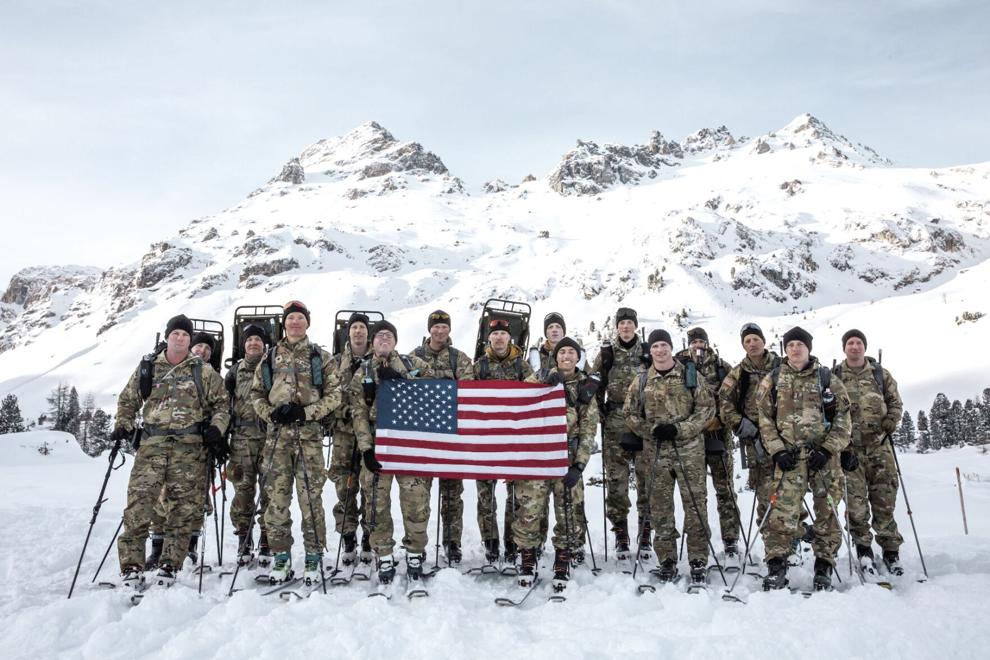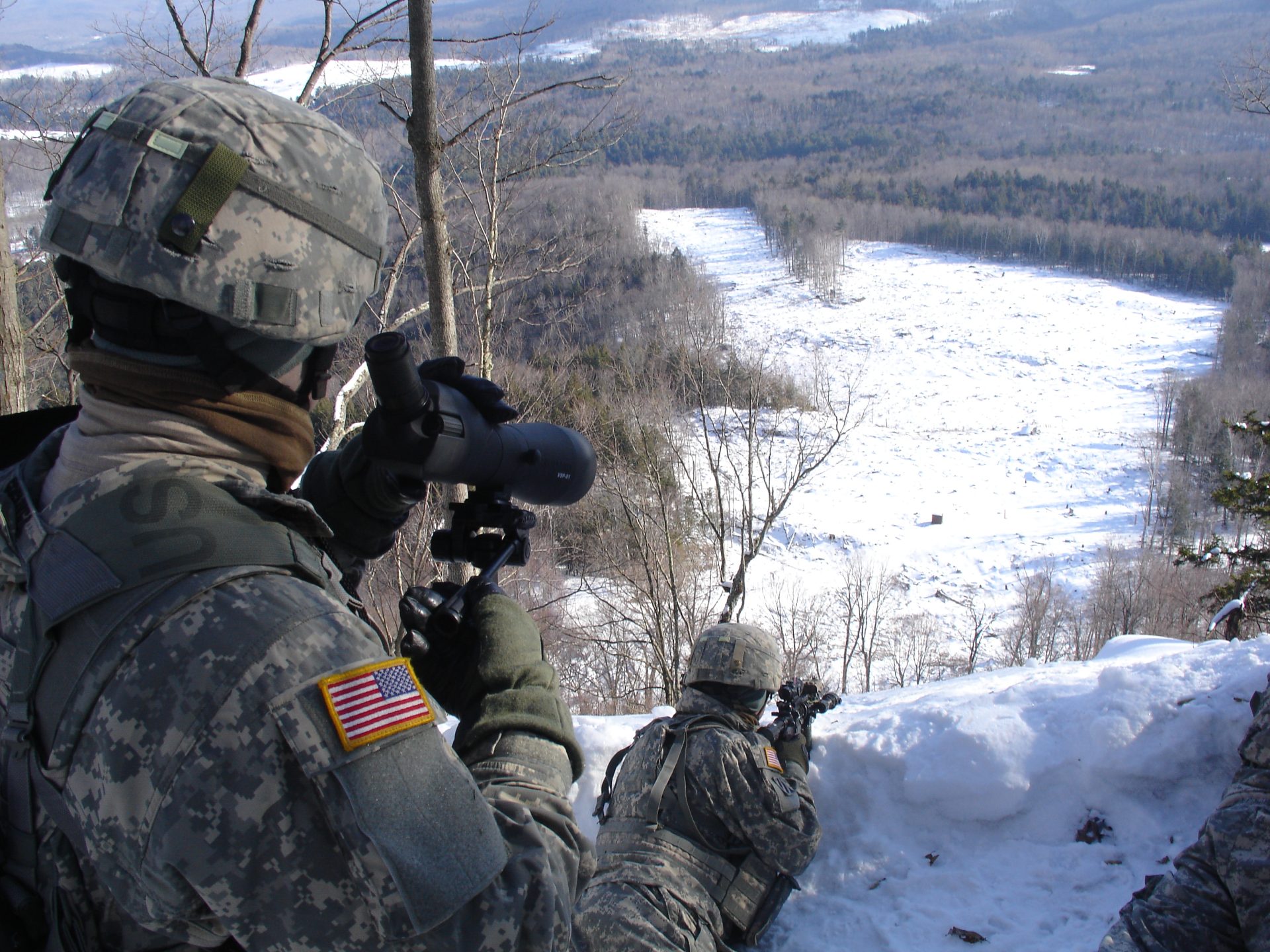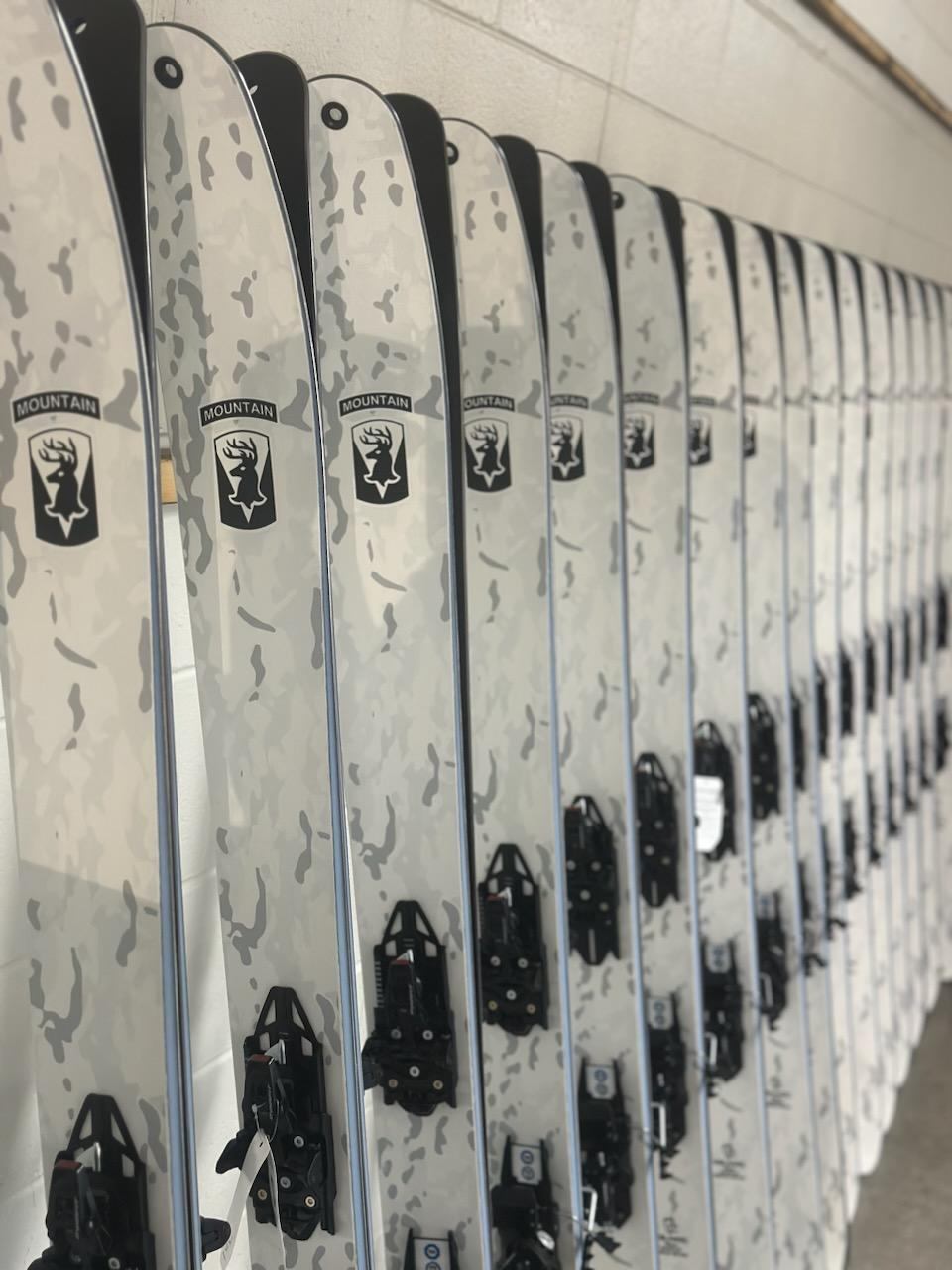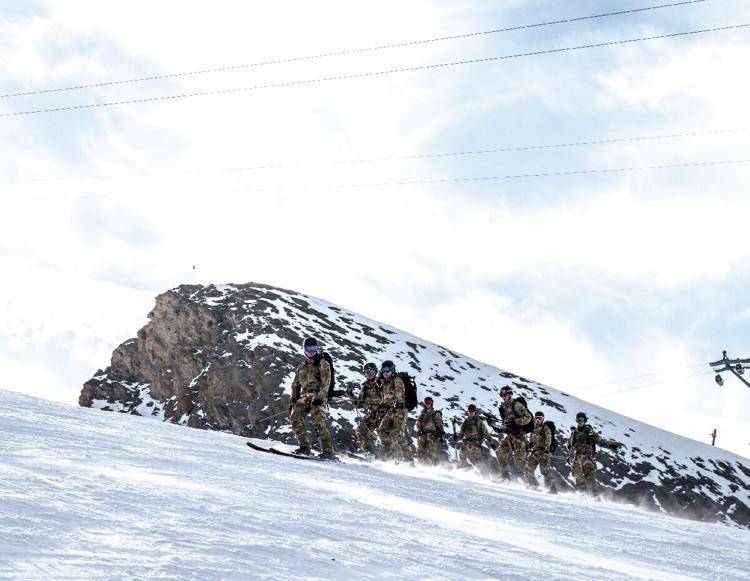
Over 65 million skiers hit the mountains last season, making it the highest number of skier visits since records began kept during the 1978/79 season according to the National Ski Areas Association. The mountains are the place skiers and riders visit to get away from all the stresses that life can throw at us. It is a place we can relax, have fun, and enjoy the feeling of hitting the slopes on a powder day. However, it is not all fun and games for the soldiers of the United States Army who conduct operations in mountainous terrain throughout the world.
Preparing soldiers for conducting missions in such a harsh environment requires advanced training and skillsets if the soldiers are going to complete their missions successfully. In 2003, the Vermont Army National Guard Mountain Warfare School became the United States Army Mountain Warfare School (AMWS). It was designated the Executive Agent for military mountaineering with the United States Army Infantry School (USAIS) as its proponent and became responsible for teaching both active and reserve component soldiers. The Army Mountain Warfare School has been designated a “School of Excellence” multiple times through USAIS accreditation and continues to provide relevant, sustainable, mission-focused mountain warfare training worldwide.

The ultimate objective of the school’s instruction is to teach mobility in mountainous terrain and cold weather. It is the only school in the U.S. Armed Forces that teaches basic, advanced, and specialty mountain warfare courses as well as additional mission-specific training to U.S. and foreign military forces. The mountains are a place where the soldiers operate, conduct missions, and have to survive whenever the United States Army sends them there.
Mountains make up 24 percent of the Earth’s surface and house 10 percent of the world’s population. A disproportionate amount of armed conflicts is fought in the mountains according to the United States Army. There are many things to consider with geography and terrain when deploying mountain forces.
Gaining and maintaining proficiency in the mountains requires living and training in the mountains. Arctic operations primarily require skill in operating in extreme cold weather environments and the terrain is mostly flat. Traditionally, infantry forces have strived to occupy difficult alpine terrain to take advantage of the protection that ground provides as well as the tactical benefits it offers to those that control it.
The idea of creating units within the U.S. Army who were specialized in mountain and cold weather environments started in 1939. Army leaders analyzed the results of the Winter War between Finland and the Soviet Union and saw how the Finnish Army used their knowledge of operating in extremely cold weather environments to defend their country from the Soviet invasion. The Finnish army killed more than 120,000 and conducted some of those missions utilizing skis to maneuver in the mountains.
At the time, the U.S. Army decision-makers were concerned that the U.S. did not possess the ability to defend against a German invasion. The threat of an invasion on the East Coast through the Appalachian Mountains presented difficulties and those decision-makers took notice of Finnish success. The U.S. Army immediately made plans to create its mountain training school that consisted of experts in mountain and cold weather operations.
On November 15, 1941, the 87th Mountain Infantry Battalion was activated at Fort Lewis, Washington, and became the first American unit of specialized alpine soldiers. The Vermont Army National Guard Mountain Warfare School was later established in Jericho, Vermont on April 5, 1983.
The U.S. Training and Doctrine Command (TRADOC ) approved the Mountain Warfare School’s Program of Instruction in 1986. The School now teaches basic, advanced, and specialty mountain warfare courses, and provides additional mission-specific training to United States and foreign military forces in a variety of countries.

Students are also issued a rucksack that weighs 40-45 pounds, snow shoes, crampons, an M4 assault rifle, winter survival gear, and standard army gear along with their ski setups. The soldiers use skis as a way to maneuver faster and easier in the snow-covered terrain. “It is more efficient to move through snow on skis, even when going uphill,” Patnaude said. There are several pieces of individual equipment that mountain organizations need to be successful including a mountain boot, cold weather boot, and integrated glove system.
The AMWS operates both during the winter and summer and consists of Basic and Advanced Military Mountaineer Courses. The Basic Course consists of soldiers training in land navigation, first aid, casualty evacuation, mountain mobility, rock and ice climbing, and operating in alpine terrain. The course lasts 14 days and averages 14 hours per day with the intent of students being proficient in conducting small unit operations in mountainous terrain and cold weather conditions. The Basic Course does not require the students to have the ability to ski and no skiing takes place at all during the course.
The 14-day Advanced Military Mountaineer Course consists of selecting students who excelled at the Basic Course to further their training in mountain training to become assault climbers. Assault climbers are trained and capable of leading and instructing mountaineering skills on technically difficult, hazardous, or exposed mountainous terrain. They are considered experts in small-unit mountain operations and can be counted on to safely lead and instruct basic military mountaineering skills and provide advisement to their unit commanders in decisions about alpine operations.
The AMWS also teaches three specialty mountain courses; The Rough Terrain Evacuation Course, The Mountain Rifleman Course, and The Mountain Planner Course. The Rough Terrain Evacuation Course focuses on training soldiers on medical and casualty evacuation. The Mountain Rifleman Course is designed to train snipers to improve their shooting skills in high-angle situations which is different at high mountainous terrain where the air is thinner. The school does not train soldiers to shoot while skiing, however. Effectively engaging targets with a rifle while skiing down a mountain is something that is not practical. “That would never happen; you would never shoot while skiing downhill. You would stop and get into position and then engage your targets,” Patnaude said.

The Mountain Planner Course is designed to train leaders to understand the challenges of conducting missions in mountainous terrain and extremely cold weather conditions. Students learn about the effects of altitude, vertical terrain, and cold weather on personnel, equipment, movement, reconnaissance, indirect fires, casualty evacuation, resupply, and water procurement.
Teaching students how to ski is not the primary mission of the school but it does teach students skiing basics in the Advanced Course. The school focuses more on training students to conduct missions in mountainous terrain. “There is not a larger demand from the Army for teaching soldiers skiing. Until Big Army tells us there is a need to develop military ski mountaineers, we are not going to put a whole bunch of effort into that,” Patnaude said.
The Army Mountain Warfare School is a gentleman’s course which means students do not have to worry about being yelled at all the time like they do at Basic Training. The physical and mental stress comes from the demands of maneuvering in mountainous terrain, extremely cold weather, and solving problems and tasks that require high-level thinking.
The school is operated and run by members of the Vermont National Guard which has its advantages of having instructors and cadre members that have been there for a long time. The active duty unit members usually are transferred from different units every two years. This gives AMWS the ability to keep all the knowledge and experience from its staff intact and offer the best training possible. Members of the AMWS have been called upon multiple times to save lives in critical real-world emergencies in Vermont and across New England due to their expertise in alpine and cold weather operations.
There are over 450,000 soldiers in the United States Army who have jobs such as mechanics, lawyers, administrative, and many more. How cool would it be to be one of these soldiers who have the opportunity to go to the mountains and go skiing for their job? To be fair, it is a very serious job, which requires a lot of intense training in extremely harsh conditions. The AMWS serves as a tool in ensuring the U.S. Army has the most elite soldiers in the world.
For more information visit the Army Mountain Warfare School’s website.